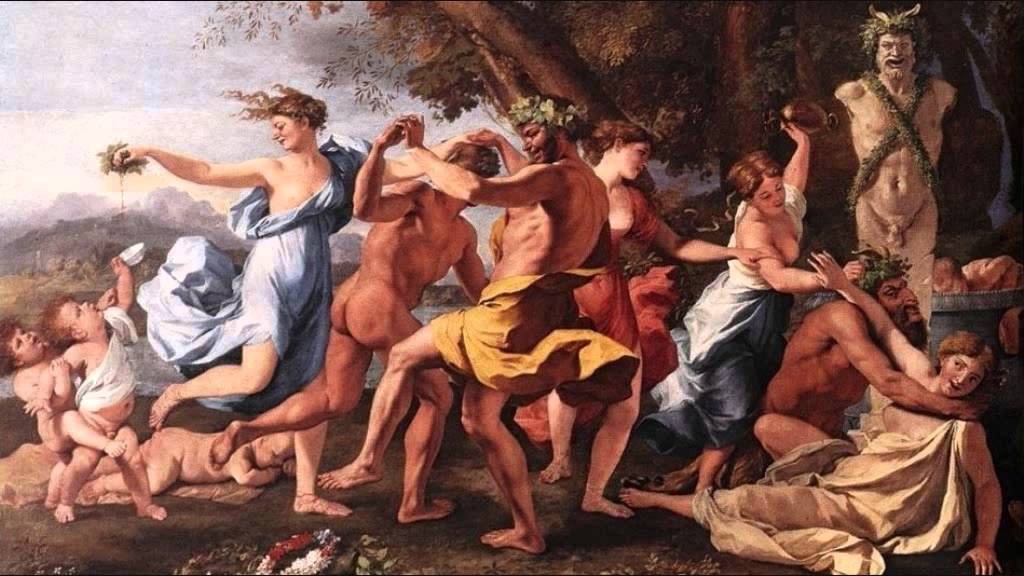Let Yourself Be Seduced by Saint-Saëns's 'Bacchanale from Samson and Delilah'

A thing you may or may not know about me in my life is that outside of classical music, I have straight up awful taste in music. It’s true. If there’s an EDM remix of a Top 40 pop song, I love it and I’ve probably bought it on iTunes. I think my friends quietly dread whenever I offer to send them a song I’m into, and my girlfriend has a longtime habit of calling the music I listen to “fuck music” (in the worst possible sense). Look, I’m not proud.
In turn, because it’s Valentine’s Day Week, and in vaguely apocalyptic times, people seem hornier than ever, I’d like to offer up the classic equivalent of such music, one of my all-time favorite pieces: Saint-Saëns’ Bacchanale from Samson and Delilah.
To refresh your memory, Camille Saint-Saëns was a Romantic-era composer from France. When last I wrote about Saint-Saëns, it was in reference to his Danse Macabre, a spooky little tone poem. When I was researching him back in October, I stumbled upon an anecdote about his love life that I’d like to bring forward. Saint-Saëns was married to a woman named Marie-Laure Truffot (great French name), the 19-year-old sister of one of his pupils. Saint-Saëns, for what it’s worth, was 40 at the time. The past, baby!! That said, it has long been suggested that Saint-Saëns may have been gay. Who knows, not me, certainly, though this theory did come up in the Tchaikovsky biography I read. Anyway, in 1878, three years after marrying Truffot, the two went on vacation and he bailed. Like, truly he ghosted on her. He left their hotel, where they were staying together, wrote her a letter that said “I’m never coming back,” and they never saw each other again. The past!!! Was!!! Nuts!!!!!!! I run into my exes every day of my life because, well, it’s a small city, but whatever.
What’s Spookier Than Saint-Saëns’s ‘Danse Macabre’?
The year before that, however, was the year that Samson and Delilah premiered. The Bacchanale is the big dance from Samson and Delilah, one of Saint-Saëns’ most renowned operas based, of course, on the biblical story of these two idiot lovebirds. During this scene in particular, the characters are celebrating a — guess what — bacchanale (a festival for Bacchus, who loved to drink and bone) and Samson and Delilah are slowly seducing each other. It’s sexual, trust me, opening on this very coy oboe solo.
Admittedly, one of the reasons this piece has always resonated with me is its highly percussive sound. Not unlike Shostakovich’s 5th Symphony, this also has one of my favorite timpani parts I’ve been lucky enough to play. If you listen for it relatively early on into the piece, you can hear it come in around the 2:01 mark. It just goes back and forth between two drums, but it’s key to the whole piece. It’s the heartbeat of it — the rhythm, the seduction. But even beyond that, there are some enthusiastic crash cymbals and triangle. I mean, Saint-Saëns made triangle sound sensual, kudos to him.
How I Learned To Stop Worrying And Just Listen To Shostakovich’s ‘Symphony №5’
And then about halfway through the piece, after building up to this heavy, exotic-sounding dance climax (heh), the Bacchanale switches gears around the 3:51 mark. It becomes… suddenly very sweet? Very romantic? It’s one of those scenes in a romantic movie where the couple is just so into each other that everyone else fades away. Except in this case, all of the Philistines are the ones who melt away into the background. Trust me, it works.
That moment, however beautiful, never lasts forever, and just after the 5-minute mark, the Bacchanale starts to push back into its original theme. Except, you know, this is music, so it’s that much more this time around. Including, and I know you’re rolling your eyes at me as you read this, an insanely wild timpani solo. You both do and don’t know it’s coming, but it’s exactly what you want right at the 6:24 mark.
Let me have this for a moment.
FUCK!!!!!!!!!!!!!!
The cellos and basses, of course, God bless ’em, join in with the timpani and the whole thing just rushes together in the last minute of the piece. It’s an explosion, really, of sound and texture and debauchery. It’s a full-on nightclub banger if I ever heard it; it just happened to be written in 1877.
Fran Hoepfner is a writer from Chicago. You can find a corresponding playlist for all of the pieces discussed in this column here.
